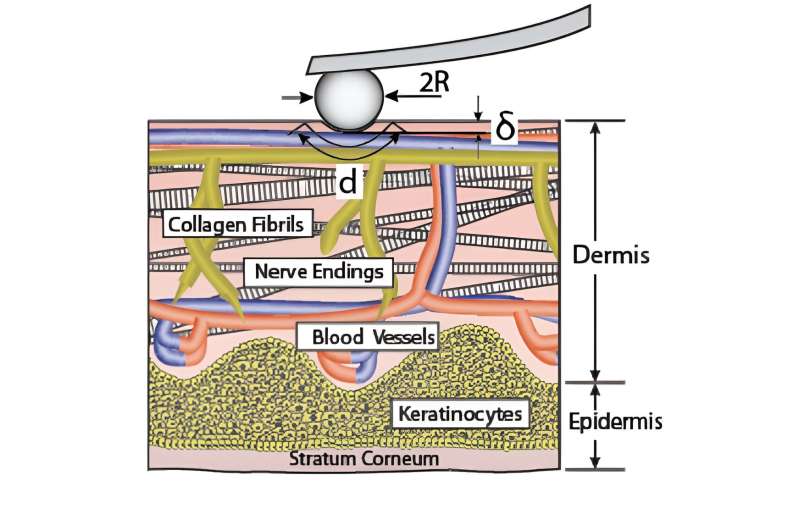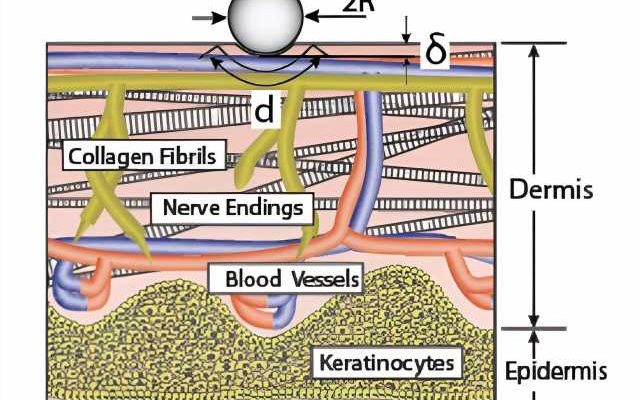
Hydraulic permeability—the ability of water to move in all directions through a multicellular complex tissue—allows skin to maintain turgor and appear plump. A new approach to quantify the hydraulic permeability of skin reveals the spongelike properties of the dermis layer.
Alan J. Grodzinsky, Gustavo S. Luengo, and colleagues devised an original method for measuring skin’s hydraulic permeability. The paper is published in the journal PNAS Nexus.
The authors used atomic force microscopy-based nanoindentation to study 14 human skin samples with a polystyrene nano-probe, and interpreted the results via a recently developed poroelastic theoretical model. This approach enabled the authors to quantify biophysical characteristics of individual layers of ex vivo human skin.
The skin’s layers include, from top to bottom, the stratum corneum, the epidermis, and the dermis. The authors found that hydraulic permeability is highest in the dermis. Much as water runs out of a sponge when it is depressed, water moves away through the tissue matrix and cells of the dermis when it is depressed—and flows backwards when the mechanical pressure is released. The stratum corneum had the least permeability, suggesting that this layer is an important barrier for water loss.
According to the authors, the method can be used to assess the effect of lotions, creams, and other skin additives designed to increase the plumpness or moisturizing level of the skin.
More information:
Ramin Oftadeh et al, Poroelastic behavior and water permeability of human skin at the nanoscale, PNAS Nexus (2023). DOI: 10.1093/pnasnexus/pgad240
Journal information:
PNAS Nexus
Source: Read Full Article
